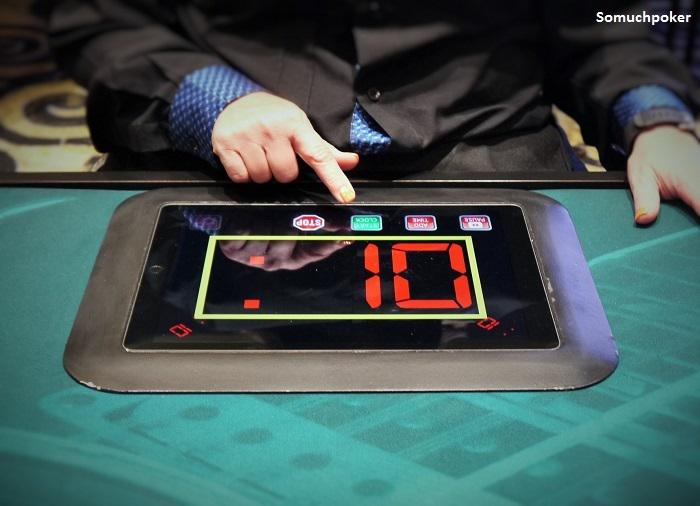WSOP 2017 takes new measures to speed up the game
Last year, the WPT Tournament of Champions trialed an “action clock” at their event in order to address the growing concern of habitual tankers stalling the game. This new concept was met with much success prompting other poker organizers to introduce a “shot clock” at their respective events. PokerStars Championship Bahamas was one of the organizers that implemented a shot clock for most of their tournaments with a US$10,000 buy-in and above, and Aria High Rollers also had a timer for their event.
More: Can the introduction of a shot clock transform the game of poker for the better?
Just days ago, the World Series of Poker joined the call to address the issue by amending the rules in regards to “calling the clock” at the upcoming WSOP 2017.
New “clock” ruling at the WSOP
While other organizers have implemented the shot clock, the WSOP revised their previous ruling on players calling the clock.
The old ruling states,
Once a reasonable amount of time, which is no less than two minutes, has passed and a clock is called, a participant will be given 50 seconds to make a decision. If action has not been taken by the time the 50 seconds has expired, there will be a 10-second countdown followed by a declaration or stopwatch alarm. If a participant has not acted before the declaration or alarm sounds, the hand will be dead. Tournament Supervisors reserve the right to speed up the amount of time allotted for a clock if it appears that a participant is deliberately stalling. Any participant intentionally stalling the progress of the game will incur a penalty in accordance with Rules 40, 113, and 114.
Due to many players deliberately stretching their time, often dragging it out until the clock is called, the latest ruling revision now dictates,
Once a reasonable amount of time has passed and a clock is called, Floor People, in their sole discretion, may give the participant an additional 0 up to 30 seconds to make a decision. If action has not been taken when prompted by the Floor Person, there will be a 10-second countdown followed by a declaration or stopwatch alarm. If a participant has not acted before the declaration or alarm sounds, the hand will be dead. Rio, in its sole and absolute discretion, reserves the right, at any time, to invoke a clock or speed up the amount of time allotted for a clock. Any participant intentionally stalling the progress of the game or unnecessarily calling the clock will incur a penalty in accordance with Rules 40, 113, and 114.
Participants are now allowed to call the clock at any point if they feel a participant at the table is taking longer than is reasonable for the game situation.
The new ruling also allows the floor persons to enforce the clock on any player even without a prior request from the participants at the table. While more clarification will probably be needed on how the floor or tournament supervisors decide on this and as well on how they determine the allotted time given to a player, the new time limit of “0-30 seconds” is still much shorter than the previous ruling, and will likely help speed up the game.
Alike the shot clock or action clock, this new measure clearly singles out the habitual stallers of the game who have been using this strategy for several reasons, a couple of which are to ladder up or to avoid the bubble.
One of the biggest supporters of the shot clock is PokerStars pro Daniel Negreanu who has been an advocate of changing the rules to curb this rampant stalling/tanking strategy. Now that the shot clock has been introduced, Negreanu will have no qualms calling the clock on any habitual tankers.
The 48th installment of the WSOP begins at the end of this month with 31 days of poker events lined up. The new ruling will be in effect. Only time will tell how this new direction ultimately benefits the players and the game.
More:2017 World Series of Poker Schedule Announced
Article by Triccia David





















